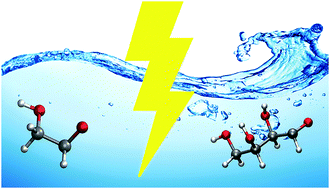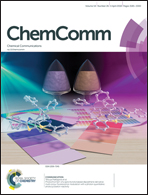Synthesis of (d)-erythrose from glycolaldehyde aqueous solutions under electric field†
Abstract
The formation of the first C–C bonds from formaldehyde represents the rate-limiting step of the formose reaction. However, the free-energy surface associated with such a process has never been determined in condensed phase. By means of ab initio molecular dynamics and metadynamics techniques here we report on the free-energy landscape underlying the synthesis of glycolaldehyde from a formaldehyde aqueous solution. Moreover, numerical samples of formaldehyde (both neat and in water solution) and of glycolaldehyde (both neat and in aqueous solution) have been exposed to intense electric fields. The application of electrostatic gradients strongly prevents the formaldehyde umpolung and catalyzes the formation of C–O-bonded polymers in formaldehyde-containing samples. However, when the field is applied on glycolaldehyde aqueous solutions, new C–C bonds are formed and (D)-erythrose is synthesized. This way, a numerical Miller-like experiment led to the formation of a prebiotically relevant (D)-tetrose from ubiquitarious molecules such as glycolaldehyde and water.



 Please wait while we load your content...
Please wait while we load your content...